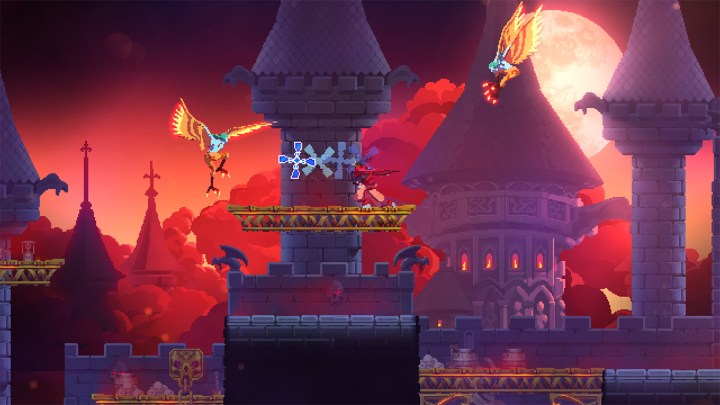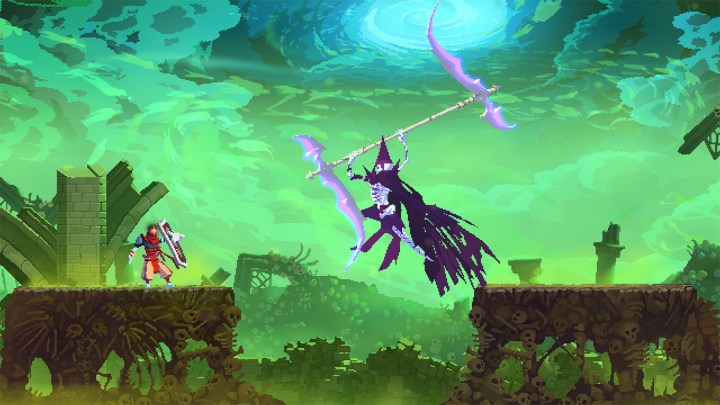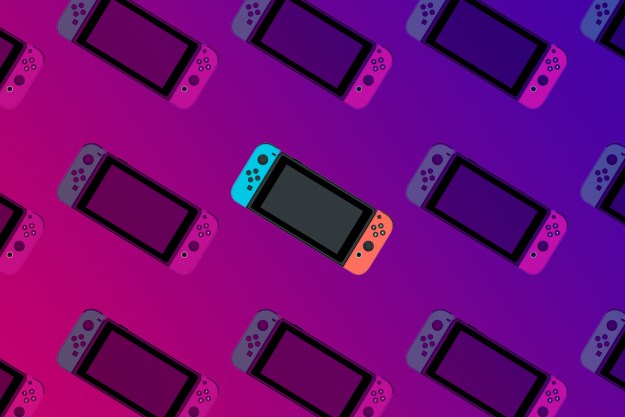These days, I don’t go into many video games with expectations. I’ve been burned enough times by disaster launches to know that I should approach every game with a bit of reservation. It’s to the point where I’ve wiped the word “fan” out of my lexicon almost entirely, refusing to get too excited about any upcoming game even if it’s part of a series I usually like. Sure, I love the original Resident Evil 4, but you won’t catch me hyping the remake when I have no idea what state it’ll launch in this month.
Dead Cells: Return to Castlevania, on the other hand, is an exception to those rules. From the very moment the crossover DLC was unveiled, I could guess exactly what I was in for. One of the best modern roguelites mashing up with a property known for its iconic style? Look up the term “safe bet” and you’ll find Alucard’s pixelated face staring back at you, giving a confident thumbs-up.
Sure enough, Return to Castlevania does not disappoint. It isn’t just a nostalgia trip for fans of the classic monster-slaying series; it’s another strong Dead Cells expansion in a long line of them, cementing the roguelite’s legacy as one of the best indies of its era.
A (not so) miserable little pile of secrets
The Castlevania DLC slots into Dead Cells quite naturally. I started a fresh file in the game on PC and was able to access the new content within an hour. While exploring the roguelite’s opening area, I bumped into none other than Richter Belmont, who asked for my help in taking down Dracula. Rather than following the usual level progression path of the standard roguelite, I’d now have the option to jump into a new door that would take me to the outskirts of Dracula’s castle.
My first trip down that path was immediately joyful. I quickly found myself on a mission to infiltrate the castle, warping into it and looking for a way to bring its massive drawbridge down. What works so well here is that both of these IPs find an easy way to meet in the middle. That’s apparent off the bat in its visuals, which map the general feel of Castlevania onto Dead Cells’ distinct pixel art style. Classic music from Castlevania have been remixed to perfection here too, nicely matching the rest of Dead Cells’ score while still retaining the feel of the original tracks.

While the aesthetic influences are obvious, I’m still very much playing with its quick action and mobility-heavy dungeon crawling. The Castlevania elements slot into that format incredibly smoothly, from enemies to weapons. Foes like bone-tossing skeletons and pike-wielding guards feel like they’ve been in Dead Cells all along, as they test my ability to quickly read attack arcs and dodge around them.
The new weapons are the most impactful change here, though, as they bring something exciting to the entire game. Just like a normal run of Dead Cells, players can discover blueprints for new items and weapons. The new DLC adds a collection of Castlevania-themed items to that pool, many of which just make sense with Dead Cells’ combat system. Holy Water, for instance, is an excellent side weapon that lets me burn the ground in front of me. A familiar white cat, on the other hand, delivers a critical forward strike, but also acts as a passive familiar that attacks enemies on its own while I explore. I’ve only found a handful of the DLC’s new items so far, but each one feels entirely consistent with Dead Cells’ core combat.
While the DLC seems like a celebration of the Castlevania series, it’s actually a showcase for just how cool Dead Cells is. It’s wild that I could trounce into Dracula’s castle wielding Alucard’s shield and Hollow Knight’s nail, occasionally transforming into a chicken from Guacamelee to drop bombs. The fact that none of those abilities feels out of step with one another is a game design triumph. Return to Castlevania cements Dead Cells as a lovingly constructed museum to video game weaponry. Every IP holder should be chomping at the bit to get in on it next.

Return to Castlevania is a sizable DLC, though you’ll still want to calibrate your expectations. It brings four new biomes (five if you count an altered castle that appears in its bonus Richter mode) and two of those are boss fight hubs. There doesn’t appear to be too much randomization to level construction, as my runs through the castle looked about the same each time. Those first two biomes are relatively easy to get through, so the real challenge comes from fighting the tough bosses after them. I imagine that could leave players a little disappointed, but that’s frankly a lot of content for an add-on to an already gigantic game — especially when you factor in the new weapons that’ll widen out the core roguelite run and a bunch of unlockable costumes.
I came to the DLC eager to see its Castlevania flair, but I left itching to get back into Dead Cells. After a few hours of poking around, I was already fully hooked back in and tempted to continue that new save file beyond Dracula’s fortress. It may not be a full-on Castlevania game, but it’s one hell of a good reason to revisit Dead Cells.
Dead Cells: Return to Castlevania is available now as a DLC add-on.
Editors' Recommendations
- Prince of Persia is getting a Dead Cells-style roguelike next month
- Forget live service. Great DLCs kept us playing old games in 2023
- Returnal might be the first PC game to recommend this much RAM



